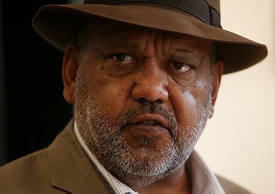Weekly column from Council Courier e-newsletter by CEO Greg Hallam, Friday 12 February 2016.
Prime Minister Malcolm Turnbull chose to begin the annual Closing the Gap address to Federal Parliament this week by speaking in the Ngunnawal language of the Canberra region’s first people, something that no other senior politician had done before.
It was a gesture that resonated with many but of far more impact will be what his and other governments do over the next 12 months to achieve elusive employment, health and education targets for indigenous Australians.
Local government in Queensland has a big stake in the nation successfully hitting the Closing the Gap targets, first agreed to by the Coalition of Australian Governments (COAG) in 2008.

Seventeen of the state’s 77 local councils represent Aboriginal or Torres Strait Islander communities. Where the Closing the Gap report states that its targets are not on track to be achieved is where these communities are struggling the most.
While the target to halve the gap in child mortality between indigenous and non-indigenous Australians by 2018 is on track, the goal of completely closing the gap in life expectancy by 2031 is not.
Nor is the target to halve the gap in unemployment by 2018.
Mr Turnbull promised to redouble efforts to reach the stated goals and that is welcome. But while the Federal Government is obliged to report annually on how the nation is far on Closing the Gap, our indigenous council leaders deal with the consequences of these disparities every day, as do other councils with large numbers of indigenous constituents.

Perhaps the time has come for some independent oversight of how governments are trying to meet these goals.
The idea of an Indigenous Policy and Productivity Council, pushed by Noel Pearson (pictured) among others, that would genuinely empower local communities and hold every government to the Closing the Gap commitments, is looking increasingly attractive.
At the very least, the Federal and State governments should do more to ensure that local communities and the councils that represent them are more involved in setting development agendas and leading the way toward innovative solutions to indigenous disadvantage.